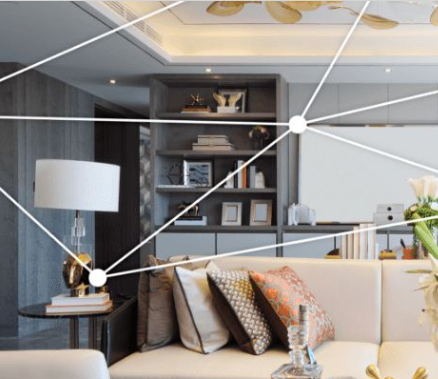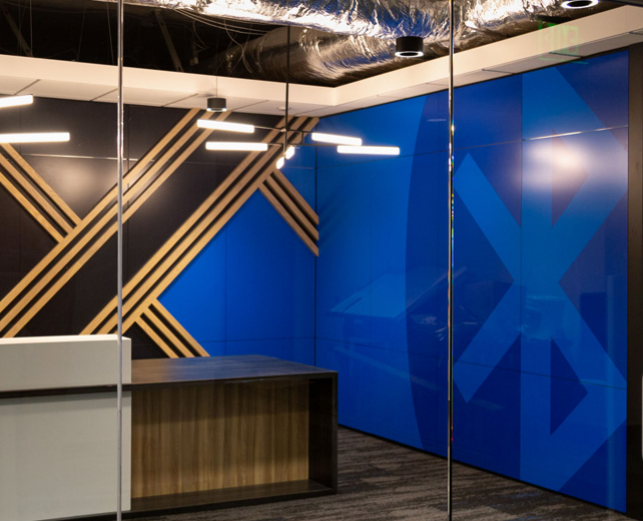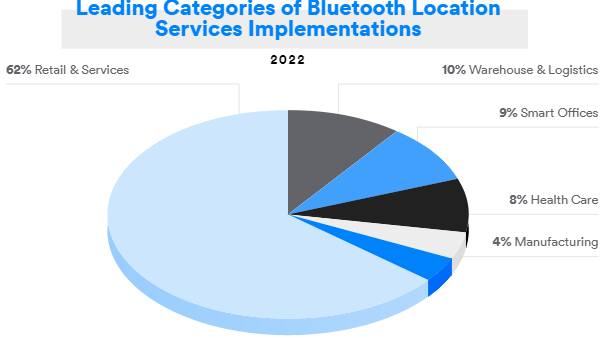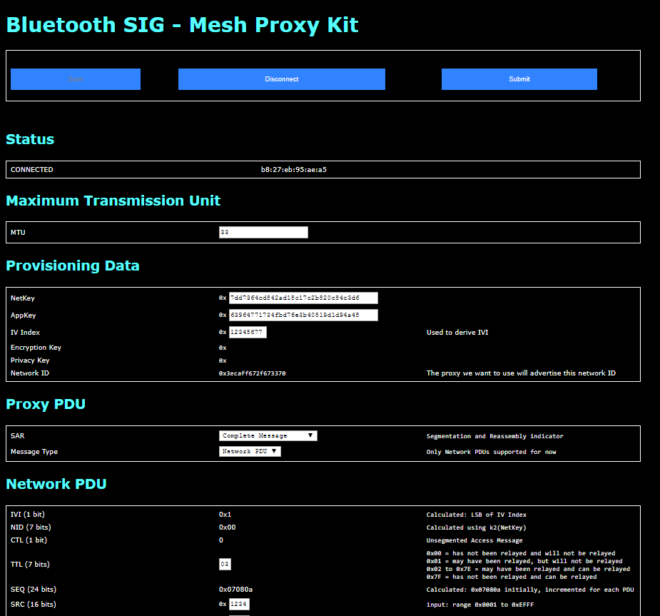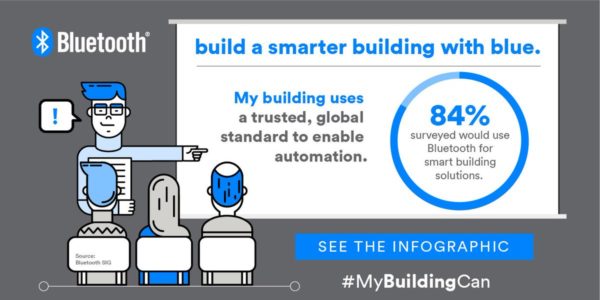
The following article, authored by GAO Pan, originally appeared in C114.
When we talk about Bluetooth® technology, many people probably first think of mobile phones and a variety of external devices, such as AirPods, smartwatches, and smart speakers. But, in fact, what Bluetooth technology can achieve is much more than that.
Bluetooth, as a radio-frequency technology, provides a full-stack solution that meets specific connection needs, including audio streaming, data transfer, location services, and device networks. The application scenario of Bluetooth has expanded from audio transmission to low-power data transmission, and it is able to meet the market demand for indoor location services and reliable, large-scale device networks. Connecting to AirPods and smartwatches are just the most common typical applications of Bluetooth technology in audio streaming and data transfer.
In terms of location services and device networks, in January this year, Bluetooth Special Interest Group (SIG) launched version 5.1 of the Bluetooth Core Specification and introduced direction finding, one of the most important new features of Bluetooth. This capability promises significant performance improvements for location-based Bluetooth solutions. At the same time, the Bluetooth Mesh technology, which was released two years ago, is also increasingly recognized by the market and has begun to play an important role in areas like the smart home.
Classification of Bluetooth Location Services
ABI Research, a market research firm, estimates that shipments of Bluetooth® Location Services products will exceed 400 million by 2023. Location services has become the fastest-growing solution area of Bluetooth technology.
What needs to be mentioned here is that Bluetooth Location Services did not emerge with the introduction of the feature of direction finding. The development of this technology has been going on for many years, and Bluetooth has been widely used in location services since the introduction of Bluetooth Low Energy (LE). In general, there are two main categories of Bluetooth service applications: proximity solutions and positioning systems. Typical applications of proximity solutions are item tracking and point of interest (POI) information. The second category is positioning systems, which is divided into real-time positioning systems (RTLS), mainly for asset tracking and positioning, and indoor positioning systems (IPS), mainly used for wayfinding.
“When we first promoted the latest Bluetooth Direction Finding feature, one of the main considerations was to use it as an enhancement of Bluetooth Location Services,” Kai Ren, Developer Relations Manager at the Bluetooth SIG, APAC, said in a recent interview with C114. “The direction-finding feature will not replace previous solutions based on signal strength. It will be more of an enhancement of Bluetooth’s capabilities in location services. Based on the Bluetooth Direction Finding feature, the positioning accuracy can be improved from the previous meter level to the current centimeter level. This is made possible by utilizing a new mechanism to detect the angle of the signal in Bluetooth Direction Finding.” Here, Kai is referring to AoA (angle of arrival) and AoD (angle of departure).
![]()
Methods of AoA and AoD
Before we dive deeper into AoA and AoD, let’s first figure out the implementation mechanism of Bluetooth® location services prior to the introduction of the direction finding feature.
Different signal strengths are a quality assessment of signal links. The mechanism that a Bluetooth positioning system uses works this way. Before the construction of a Bluetooth positioning system in a certain site, a signal and distance curve will first be built based on the actual situation. Then, according to the signal strength, circles will be drawn according to the three-sided distance represented by different signal strength separately. The place where the circles converge and overlap the most will be the most likely location for this node. This is the principle of Bluetooth LE real-time indoor positioning system based on signal strength.
However, in Bluetooth Direction Finding, AoA, and AoD methods are added.
According to Kai, in the AoA scenario, the Bluetooth transmitter has only one antenna, which periodically transmits Bluetooth wireless communication signals. Meanwhile, at the receiver end, there is an antenna array. This is a significant difference from the previous Bluetooth based signal strength scheme. The antenna array at the receiving end not only has multiple antennas but also has a variety of ways to place the antenna. “The distance between antennas is differential, so even with the same wireless communication signal, when it sweeps over the antenna array, the phase difference is not the same,” said Kai “With the phase difference and the 2.4G wavelength, as well as the distance difference between the antennas, the receiver can calculate an angle of arrival.”
AoD, on the other hand, works the opposite way. There is an antenna array at the transmitter end that has multiple antennas, and the receiver has a single antenna.
Therefore, with the AoA and AoD methods in direction finding, the area where previous Bluetooth technology can figure out by the three-sided measurement will be found out more precisely. The accuracy will be higher.
Kai said the main scenarios for AoA would be RTLS, item tracking, and some Bluetooth beacon applications, while AoD is mainly used in indoor positioning systems.
![]()
Direction Finding Feature Aims for More Than Indoor Positioning
Currently, outdoor positioning systems, such as GPS, Beidou Navigation Satellite System, and some others, are all pretty mature. What Bluetooth® is trying to do with direction finding is to achieve higher positioning accuracy in indoor locations, closed fields, and multi-layer structures. Kai believes that Bluetooth has significant advantages in indoor positioning.
First of all, the vast majority of the devices around us, in terms of hardware or software, all support Bluetooth technology. In terms of cost, the price of Bluetooth chips and Bluetooth solutions is much lower than other solutions.
The rising popularity of smartphones has created the demand for indoor positioning, so the direction finding feature was launched right at this point in time. In the future, Bluetooth Mesh and direction finding will be combined. Lighting systems in hotels and other venues are expected to directly provide Bluetooth indoor positioning and direction finding. What’s more is that today, almost everyone is a consumer of Bluetooth technology. Bluetooth brand awareness and technology maturity are widely recognized.
In fact, the application scenario of Bluetooth Direction Finding is not limited to indoor positioning. It can also be applied in large urban complexes. Kai pointed out that car keyless entry will also be an important area that Bluetooth Direction Finding may apply to in the future.
A Revolutionary Milestone
In 2015, the Bluetooth SIG established the Bluetooth® Mesh Working Group. Then, in July 2017, Bluetooth SIG released the first version of Bluetooth Mesh.
Now, when two fixed devices exceed wireless communication coverage, if they still need data communication, then Bluetooth Mesh can provide the ability to exchange data between the two nodes that were otherwise outside wireless communication coverage.
“This is a revolutionary milestone for Bluetooth’s network topology. With Bluetooth Mesh, Bluetooth technology is no longer a ‘point-to-point’ or ‘point-to-many’ technology. For any large-scale deployment, whether indoors or outdoors, we can transfer information in this multi-hop way through the mesh,” said Kai. In theory, the maximum network capacity of Bluetooth Mesh can now reach more than 32,000 nodes.
Kai emphasized there was often a misunderstanding about Bluetooth technology, that Bluetooth is a short-range wireless communication technology. “Actually, this is largely due to the battery power and built-in antenna design of our devices today. With the feature of long range in version 5.0 of the Bluetooth Core Specification, some devices can achieve more than 1.5 km of Bluetooth coverage.”

From Lighting to Multi-Scene Applications
Kai said that with the introduction of the Bluetooth® Mesh, the first everyday application scenario was lighting, “because lighting is an inelastic demand.” Before Bluetooth Mesh came out, Bluetooth low energy was adopted by some lighting companies in the industry, mostly in the connecting area. With Bluetooth Mesh , the large-scale unified operation of this lighting is realized. When people turn on or turn off the lights, or turn them halfway, the command rarely goes to a single light. This is a typical scenario where the Bluetooth Mesh network flooding mechanism is very beneficial.
Meanwhile, Bluetooth Mesh has entered many other areas, including switching and sensor-class applications.
In the field of sensors, temperature sensors, humidity sensors, lighting sensors, etc. can be incorporated into the entire Bluetooth Mesh network. “For example, in a conference room, if there is a Bluetooth Mesh lighting system, and the curtain is Bluetooth Mesh enabled, with the installation of a light sensor, when the light sensor detects that the sun’s irradiance exceeds a certain limit, it would send a command through the lighting system to the curtain’s automatic control system, after which the curtain can achieve an automatic closure and opening. “
Kai told us that lighting can be used as a backbone network to which more and more applications can be added. These applications run in the same network, and the data from the sensor system can be fed back not only to the lighting system but also to the air conditioning system, which can be shared. Provided, of course, that these devices must use standard Bluetooth Mesh specifications.
Bluetooth Mesh Emphasizes Model Standardization
We may use devices from several different vendors In a Bluetooth® Mesh environment. How do you enable devices from different companies to “understand each other’ and interoperate with each other in a mesh network?
In fact, when the Bluetooth Mesh protocol was introduced, the Bluetooth SIG took this into account and released Bluetooth Mesh models. “Bluetooth Mesh models provide a standardized set of data to define a structure that includes model IDs, status, and related operations,” said Kai “Using the standard Bluetooth model definition released by the Bluetooth SIG, means these devices can communicate with the same language. Company A’s sensor information can be understood by Company B’s lighting products and turned to a related operation. This is what the model does.”
The Bluetooth SIG released the Bluetooth Mesh model 1.0.1 version recently, which includes some of the most basic operations, such as switching and tuning.
“We hope that in the future, through the Bluetooth SIG and our member companies, we will improve the connection capability of Bluetooth Mesh to the extent that Bluetooth headset audio products have right now,” said Kai “Of course, Bluetooth Mesh is just a two-year-old toddler compared to Bluetooth Audio, which is 20 years old. There’s still a long way to go before we can make our connectivity better.”
![]()
Understanding the Development of Chinese Enterprises from the Smart Home Subgroup’s Point of View
According to the 2019 Bluetooth® Market Update, as of May 2019, the number of Bluetooth SIG member enterprises has exceeded 35,000, including more than 7,100 in Greater China, and 4,300 in mainland China.
Kai said the Bluetooth SIG believes the domestic smart home market in China is in a very prosperous state. Moreover, Chinese companies have a relatively high acceptance of Bluetooth Mesh. With the growing popularity of Bluetooth Mesh networking in the field of smart home solutions, early this year, the Bluetooth SIG officially announced the establishment of a new Smart Home Subgroup, which Alibaba, Xiaomi, and other companies have joined.
“Chinese enterprises are very active in the smart home industry, so the Smart Home Subgroup is currently the only subgroup in the Bluetooth SIG to use Mandarin as the language of communication and with Beijing time as the official meeting time,” said Kai.
“The market demand is strong in so many categories and all kinds of industries want to use Bluetooth Mesh, but our model definition is not yet in line with the demand,” said Kai. “We hope to accelerate the model definition of Bluetooth Mesh products in the future so that we can bring the consumers better experiences with future connectivity.” He pointed out that this is why the Bluetooth SIG formally set up this Subgroup this year.
When asked about the future development trend of the smart home market, Kai agreed that the future will present a variety of wireless communication technologies, and they will be complementary to each other. He believed that different technologies have their own strengths, and users can choose different wireless communication protocols according to different application scenarios. The Bluetooth community will continue to invest and work hard to play a greater role in the target market.
The video below shows you how the Bluetooth Smart Home Subgroup is making intelligent and integrated smart home experiences a reality.

![Forbes Predictions article 72 dpi 1300 x 680 px 768x402[1]](https://www.bluetooth.com/wp-content/uploads/2024/04/Forbes-Predictions-article-72-dpi-1300-x-680-px-768x4021-1-660x345.png)








![shutterstock 1653733096[1]](https://www.bluetooth.com/wp-content/uploads/2024/03/shutterstock_16537330961-660x372.jpg)

